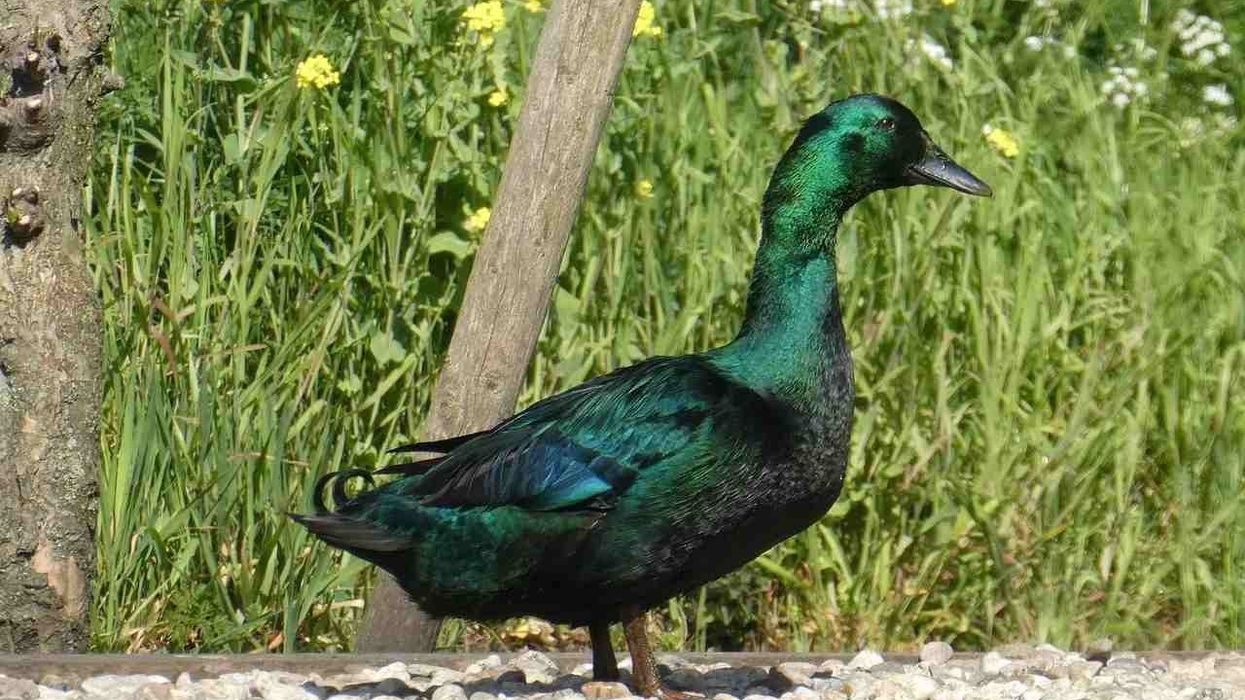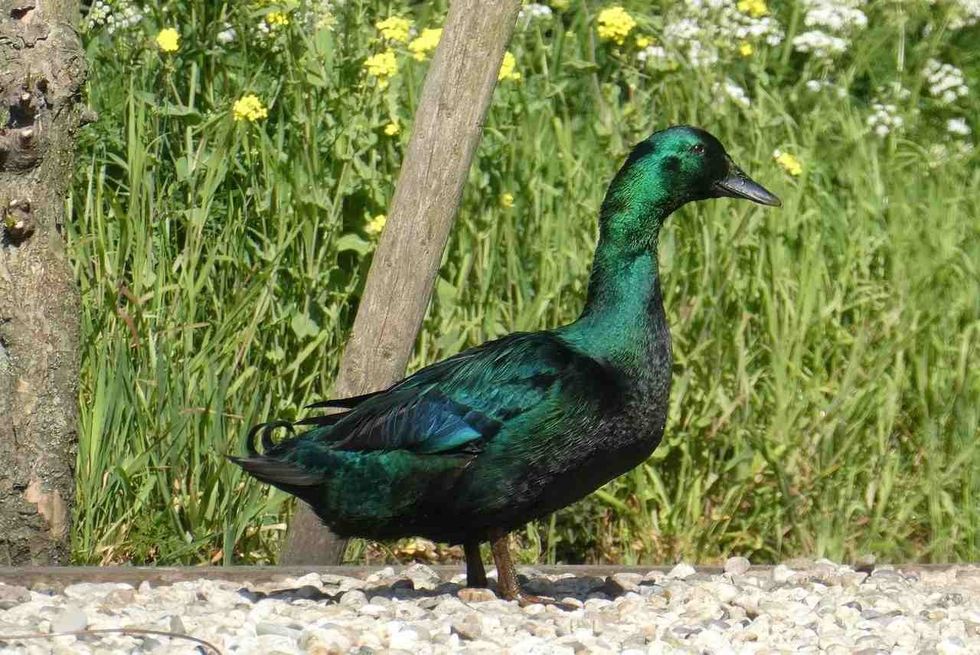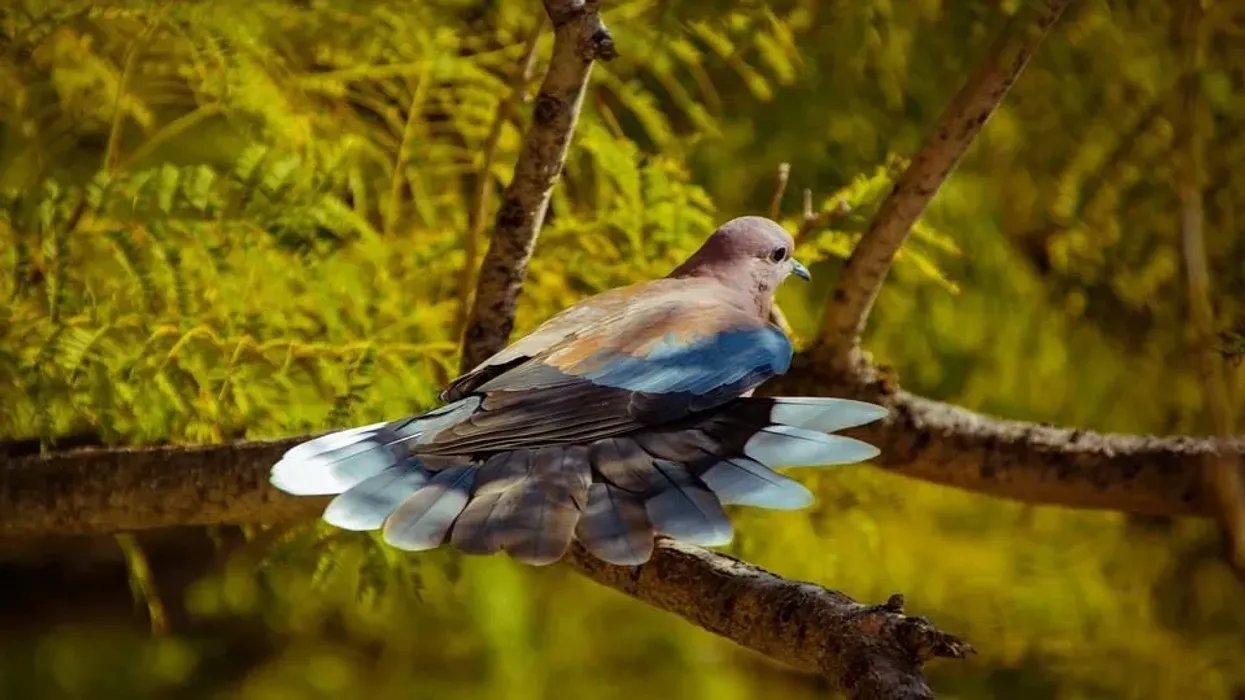The Cayuga duck is one of the toughest domestic ducks, known for its ability to survive during the harsh winter season. It is one of the American breeds of domestic duck and has an interesting history.
The history of the bird is often debated, but the most accepted story is that a miller caught a pair of wild black ducks in his pond. He raised the pair of black ducks and proceeded to breed them, and then sold their tasty eggs and meat at the market.
Some ducklings were brought to the Finger Lakes region in New York in 1840.
From there, the duck became quite popular in New York. The duck gets its name from Lake Cayuga in New York, where the miller first caught the pair of birds.
Cayugas were bred for poultry as they could lay many eggs per year and provide meat as well. While Cayugas were famous for their poultry and nutritious eggs and meat, they were soon replaced by the Pekin duck in the food market. Today, people breed Cayugas and raise their ducklings for ornamental purposes.
Keep on reading to learn more interesting facts about the Cayuga Duck! If you liked this article about Cayuga Duck facts, also check out our other articles on frigate bird facts and crowned eagle facts.
Cayuga Duck Interesting Facts
What type of animal is a Cayuga Duck?
A Cayuga duck is a type of domestic duck.
What class of animal does a Cayuga Duck belong to?
The Cayuga duck breed belongs to the Aves class of animals.
How many Cayuga Ducks are there in the world?
As of 2008, it was assumed that there are around 1000 breeding Cayuga ducks left, making them a globally threatened species. However, studies show that the number of these domestic ducks has increased considerably since then.
Where does a Cayuga Duck live?
The Cayuga duck breed originated in the United States of America in North America. The duck is currently restricted to within the country itself. It is often kept as a backyard duck or is bred by professional breeders for sale.
What is a Cayuga Duck's habitat?
Domestic ducks like the black Cayuga duck require a region with a temperate climate to live in. They also need shelter from too much sunlight, wind, and rain.
Cayuga ducks cannot fly away much, so they do not need a high fence around them. They are comfortable in aquatic habitats such as a lake or pond surrounded by trees and shrubs.
Who does a Cayuga Duck live with?
Domestic black Cayuga ducks are normally found living in a flock close to each other.
How long does a Cayuga Duck live?
The average lifespan of a Cayuga duck is approximately 8-12 years in the wild.
How do they reproduce?
The Cayuga exhibits an elaborate courtship display to attract the hen. They shake their feathers and display their neck proudly. The Cayuga duck breed is quite strong, even in cold temperatures of the winter season, and can give birth to many eggs. The female black duck can produce 100-150 eggs per year.
The female ducks lay the eggs and incubate them for four weeks before they hatch. The ducklings are primarily raised by the female black duck. After maturing, the ducklings lay their egg or are used for poultry.
What is their conservation status?
The Cayuga Duck is currently Not Listed under any of the Red List categories as created by the International Union for Conservation of Nature (IUCN). However, the Cayuga duck was once classified as 'Threatened' by the American Livestock Breeds Conservancy's Conservation Priority List, but as of 2020, it is listed under the 'watch' category.
This implies that their population may not be decreasing as much as it was earlier. Adequate conservation efforts to match these birds along with proper breeders have helped make this possible.
Cayuga Duck Fun Facts
What do Cayuga Ducks look like?

The wild Cayuga is a medium-sized bird, and they have black-colored bills and feet. Their body plumage is also black with a beetle-green shimmer that can be noticed under the sunlight. Their wing tips also reflect a blueish-green tinge.
The ducklings are covered with soft, black feathers which do not show a green hue till they are developed. As the ducks grow and turn old, their black feathers change to white. This bird is known to have a long neck and stand erect while moving.
How cute are they?
The black Cayuga duck may not be very cute, but it is a beautiful bird. With their iridescent hues and striking color combination, it is not hard to guess why they are raised and developed as ornamental pets today.
How do they communicate?
Like most other domestic duck breeds, the Cayuga duck breed also communicates with each other through vocalization. They make a quacking sound known as the 'hail call', especially when the mother duck is communicating with her ducklings. Apart from that, they also make a variety of sounds such as coos, whistles, and grunts to communicate.
How big is a Cayuga Duck?
The average height of domestic ducks is around 4-5 in (10-12 cm).
A Klipspringer is almost ten times the size of a Cayuga duck as it grows up to 3.2-4.9 ft (1-1.5 m) in height.
How fast can a Cayuga Duck move?
While the exact speed of a Cayuga duck has not been recorded yet, it does have webbed feet, which allows it to move easily in water. They are also bad fliers because of their heavy bodies.
How much does a Cayuga Duck weigh?
The average weight of a Cayuga duck is approximately 6-8 lb (2.7-3 g). Male birds are slightly heavier than female birds.
What are the male and female names of the species?
The male and female type of the Cayuga Duck species does not have separate, unique names. Thus, following the usual terminology, male ducks are called drakes while female ducks are called hens.
What would you call a baby Cayuga Duck?
A baby Cayuga duck is referred to as a duckling.
What do they eat?
Cayugas are great foragers, and they obtain most of the food in their diet through foraging in a lake or pond. They mostly eat small snails, slugs, and insects.
Are they poisonous?
Cayuga ducks are not known to be poisonous or toxic to human beings or other animals.
Would they make a good pet?
Cayuga ducks are not usually kept as a pet to cuddle and be affectionate with. However, they are excellent backyard domestic ducks.
Did you know...
Cayuga duck meat was extremely famous in New York and the United States of America till the 19th century. This is down to the simple fact that their meat tastes wonderful and is of high quality.
It is red meat with a beefy flavor, making it a favorite for many. However, it was very hard to process the meat of this duck compared to ducks that have white feathers.
The black feathers left a mark on the carcass and were quite difficult to clean up. So, they were slowly replaced by the Pekin duck.
Cayuga Duck black eggs
The change in color of Cayuga duck eggs is a fascinating process. After hatching, the external color of their eggs looks black.
It is a general misconception that the color of the shell is black as it is dusty green in color; the black residue appears on the egg externally during incubation. As the season changes to autumn, the color of the egg lightens and turns gray, blue in color, and sometimes white.
Male vs. female Cayuga Ducks
It is difficult to distinguish between Cayuga males and females because they share the same physical characteristics and coloring. However, male ducks of this species from New York are seen to develop curly tail feathers approximately ten weeks after birth, which the female ducks do not.
In addition to that, the sounds they make also help in differentiating between them. The female duck mostly makes a quacking sound while the male duck produces a raspy bark.
Here at Kidadl, we have carefully created lots of interesting family-friendly animal facts for everyone to discover! Learn more about some other birds including our great green macaw facts and bowerbird facts.
You can even occupy yourself at home by drawing one on our Cayuga duck coloring pages.










